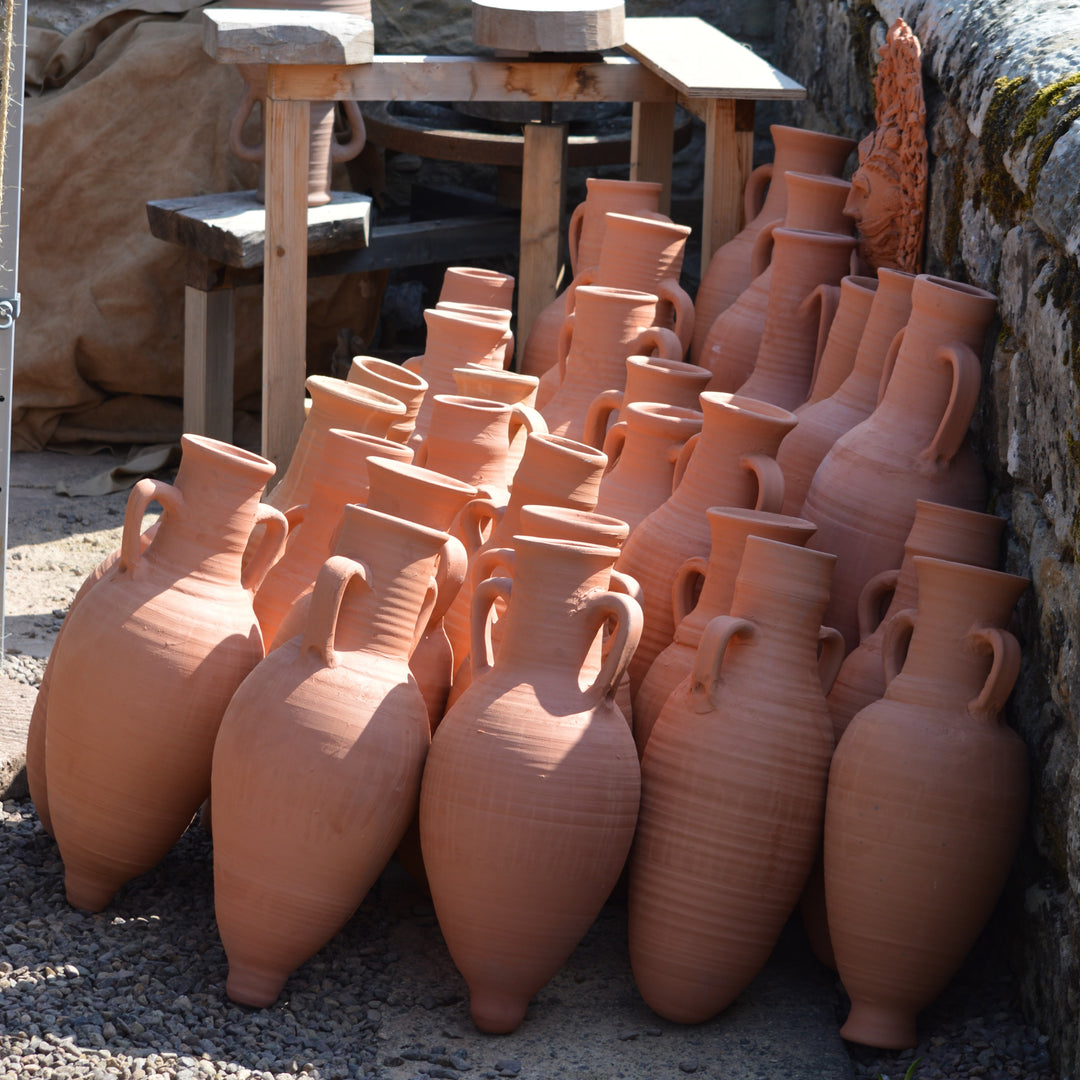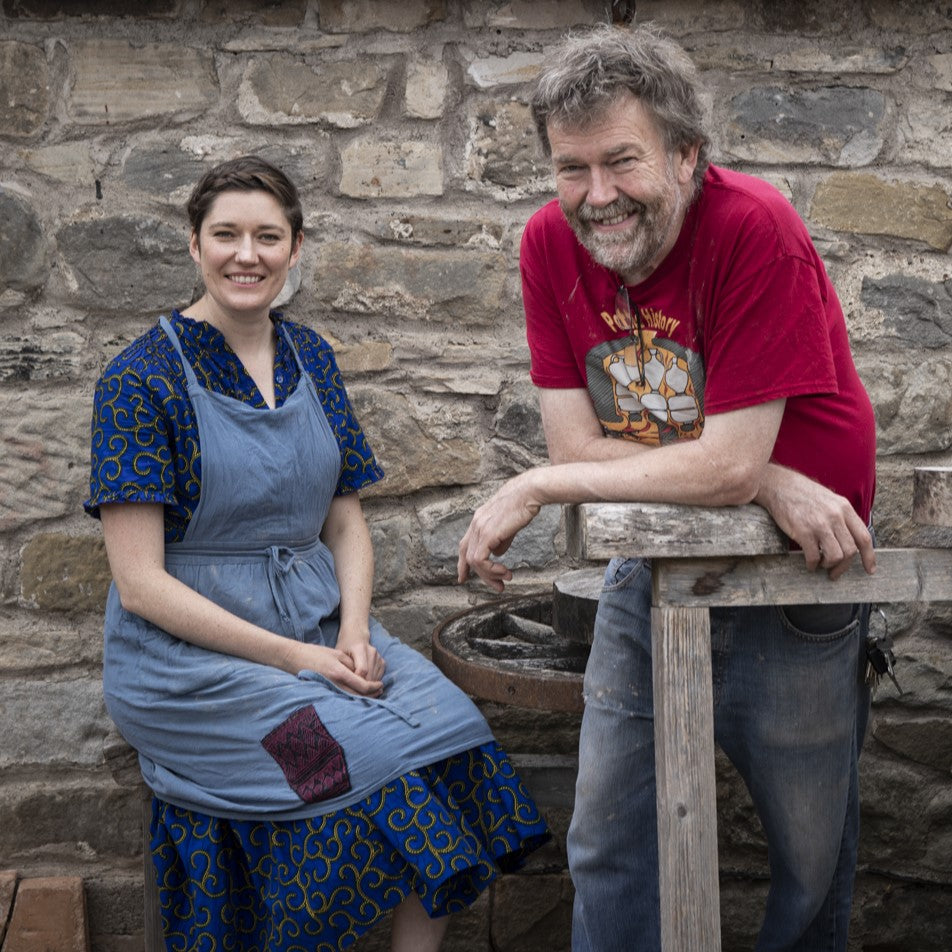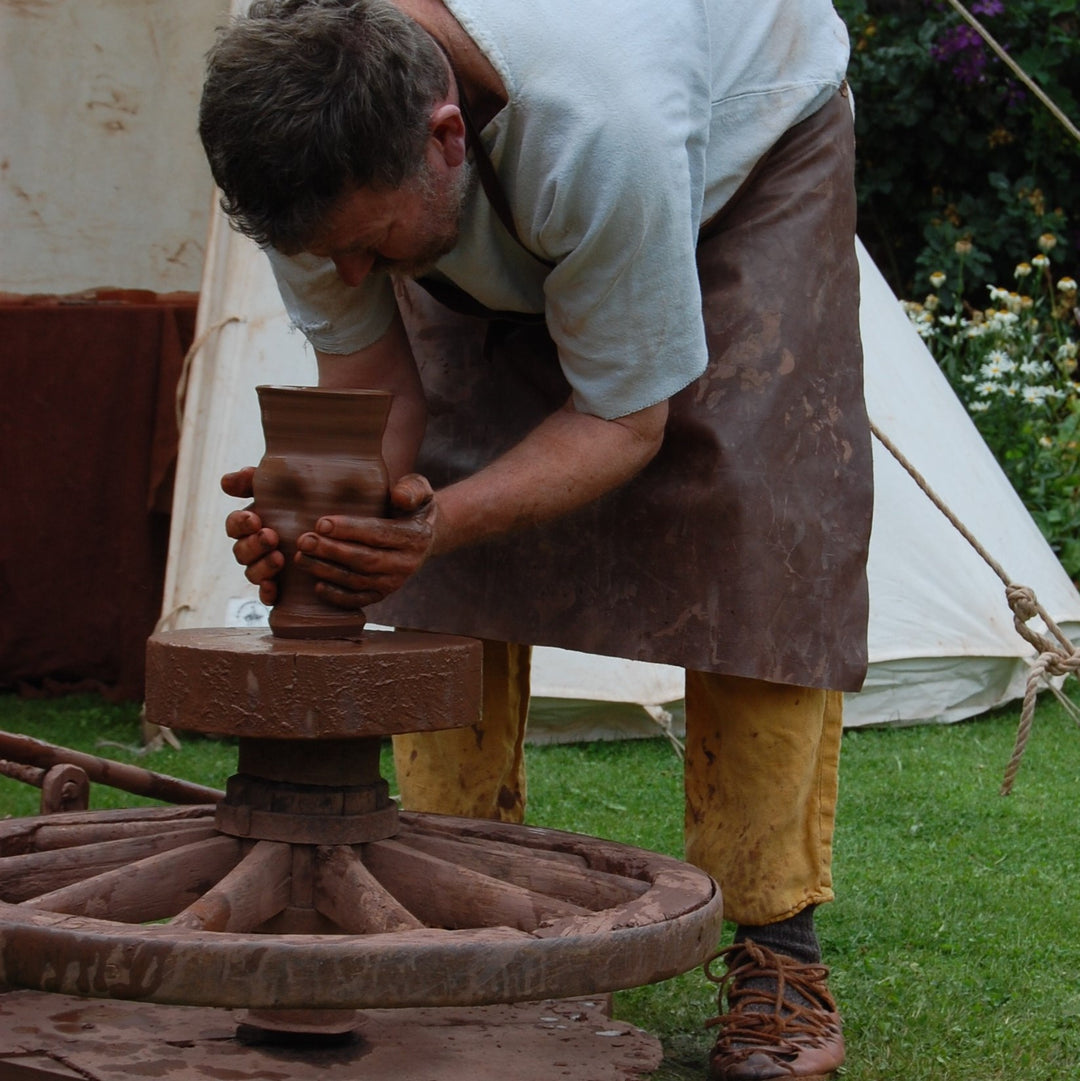Vindolanda Roman Head Pot
- In stock, ready to ship
- Inventory on the way
Details
Seeing an ancient face staring back at you from a museum display is a real thrill; it is one of the main reasons we adore replicating this sought-after style of Roman pottery. Head pots were widely used throughout Roman Britain and are some of the most striking ceramic items produced during Roman rule. They seem to have been a speciality of Romano-British potters, although they appear in other parts of the Roman Empire.
The almost caricature-like features of these pots were individually modelled onto beautifully wheel-thrown jars. It was a fairly unusual working method for the Romans, who often preferred the quicker convenience of mould decoration.
Believed to have been introduced to Britain by the Roman army, many headpots were discovered in the Colchester area, which was likely a prolific production site.
Today, you can see some truly superb headpots on display in the Colchester Museum, and we have used these rich examples to inspire these replicas. However, head potsherds are not limited to Colchester; a significant number have been found along Hadrian's Wall.
Their function and significance still need to be fully understood. Many, but by no means all, head pots have smith tools on them, suggesting a link to the God Vulcan. Many of these pots have been found in burial settings, leading some to believe that this was their main usage. However, most have been found in settlement sites, so they were more likely to be used prominently in a domestic setting, perhaps for food storage.
Production
As with all our Museum Quality Replicas, we have made this, as the original would have been, entirely by hand from natural clay and using replicas of the types of tools that the ancient makers would have used. As each one varies, you may not receive the same finish in the image, but you can be sure it will be one of a kind due to the variations caused by the firing process.
Materials
Terracotta, reduction fired
Dimensions
Approx 115mm tall, 120mm diameter
Production
This replica Roman pot has been hand-made in Northumberland by Potted History and is based on an original artefact. It has been fired to a temperature between 800 & 1000 Centigrade to emulate the same techniques the original potters would have employed nearly two thousand years ago. This process often results in surface colour and texture variations, as is common with the original Roman pottery and gives each piece its unique character. These pots have been fired in a replica Roman kiln at Vindolanda Fort.
Health and Safety
This Museum Quality Replica was made using the tools and techniques that ancient potters would have used during this era. This is an unglazed pot with a porous surface; it will absorb some of the flavours during the cooking process, adding to the flavour of future dishes. However, it also means that this pot does not meet modern Health and Safety standards, so we do not advise that it be used for cooking. Although our replicas are often used for Experimental Archaeology purposes, you do so at your own risk if you choose to use this item for cooking,
When the Romans cooked in these pots, they relied on applying sufficient heat to the pot and contents to ensure that high temperatures killed all bacteria. Heating to over 70°C for at least 10 minutes would have killed most disease-causing bacteria, and temperatures of 100°C would do even more.
Postage
All items are sent using a second-class postal service; if you wish to have an item sent first-class, please contact me for a quote. Many Thanks
SHIPPING
'Add To Cart' items are ready to send straight away. Please be aware that if bought alongside 'Pre-order' items, your order will be sent when all items are ready.
'Pre-order' items are made to order, and we will dispatch them as soon as we have handcrafted them for you; this usually takes 90 days, but international orders can take a little longer.
We ship our fabulous replicas worldwide.
Shipping costs are worked out during checkout. They are based on where you are in the world and how heavy your parcel is, which can be very variable.
All items are sent using a second-class postal service. If you wish to have an item sent first class, please contact us for a quote. Many Thanks
RETURNS
If you aren't completely satisfied with your Potted History piece, please get in touch to organise a return. Email us at
clare@rothburycreates.co.uk
Then you can send it back at your own cost in an unused condition within 30 days, and we'll refund you for the cost of the item or items returned. If you include your order number with the returned package, that will speed things up. Please leave any original packaging intact.
Our returns address is:
Potted History, Gregory Court, Rothbury, Northumberland, NE65 7SW
PRODUCT VARIATION
Please be aware that due to items being handmade and finished, colour variations will occur during the making process, and each replica will have some differences. Also, know that the item photographed may not be the one that you receive, and colours can appear differently on different screens. Please ensure you look at all the images to get a fully formed idea of the item you are ordering as we try to capture the variations within the images we share. If you prefer a specific colour variation, please contact us before ordering.

















